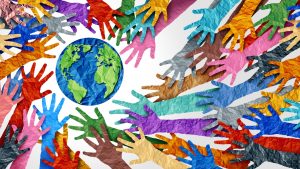
The Do’s & Don’ts of Engaging with Culturally and Linguistically Diverse (CALD) Communities
“Culturally and Linguistically Diverse” (CALD) refers to the many communities in Australia who speak different languages, come from different backgrounds, and follow different customs and beliefs. These groups make up a large part of the country, so it’s important to understand how best to connect with them.
Did you know that one in five people within NSW speak a language other than English? Languages can define cultures, allowing people to communicate their traditions, beliefs and values.
Whether you work in business, healthcare, social services, or government, knowing how to approach and engage with CALD communities in a respectful and inclusive way is key. Here are some simple do’s and don’ts to guide you in engaging effectively.

Do’s for Engaging with CALD Communities
1. Do Find out which CALD Communities may be Involved
Seek out which CALD communities exist in areas you’re looking to engage within, this can be done through resources such as Census data, speaking with key stakeholders, cultural advisors or spending time in the community.
2. Do Take Time to Learn About the Culture
Every culture has unique customs and values, so what may be seen as normal or polite in one culture can be considered offensive in another. Taking time to understand these differences is key to building respectful and meaningful connections which is assist you during your engagement process.
3. Do Respect Language Preferences
Language is often tied to a person’s identity. If you can, offer materials in the community’s preferred language or use interpreters. This will help people understand your message leading to stronger engagement
4. Do Include Community Members in Planning
Invite members of the community to help shape your projects or plans. They can give you insights on what the community needs and how best to approach them.
5. Do Recognise Diversity Within Each Group
Each person within a CALD community is unique. Avoid lumping everyone together. Instead, get to know each group’s specific needs and challenges.
Don’ts for Engaging with CALD Communities
1. Don’t Assume Everyone Speaks Fluent English
Even if many people speak English, some may prefer their own language. Use simple language, avoid jargon, and ask people if they have a preferred language.
2. Don’t Assume
Don’t assume you know everything about a person based on their culture. Instead, get to know each person as an individual.
3. Don’t Ignore Body Language
Non-verbal communication, like eye contact or gestures, may mean different things in different cultures. Observe and adapt to their comfort level.
4. Don’t Rely Only on Written Materials
Some groups may connect better through face-to-face conversations or videos. Written information is helpful, but adding meetings, workshops, or videos can make your message clearer.
5. Don’t Overlook Cultural Holidays
Avoid scheduling events during important cultural or religious holidays. Knowing these dates and working around them shows respect for the community’s traditions.
Building Positive Connections with CALD Communities
Effective engagement requires a well rounded and inclusive plan. Ensuring all stakeholders including CALD communities are considered will ensure a smooth and effective engagement process.

